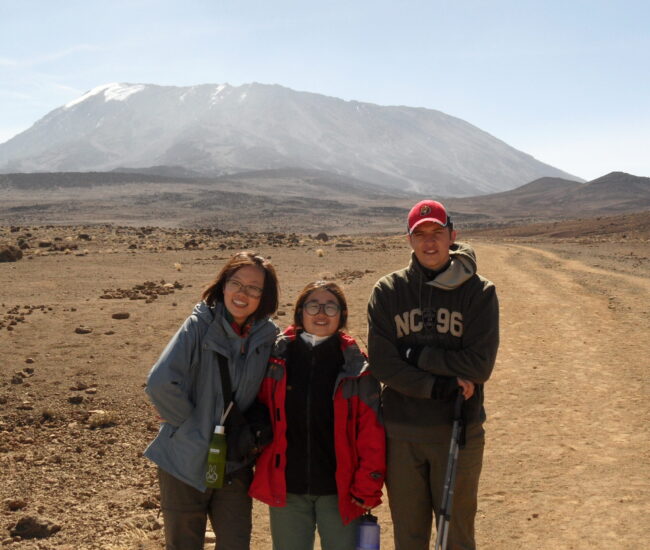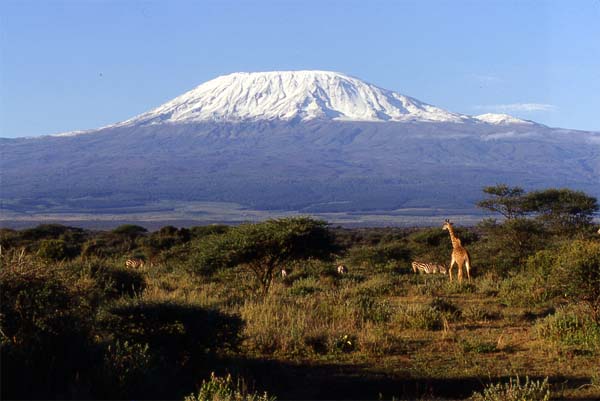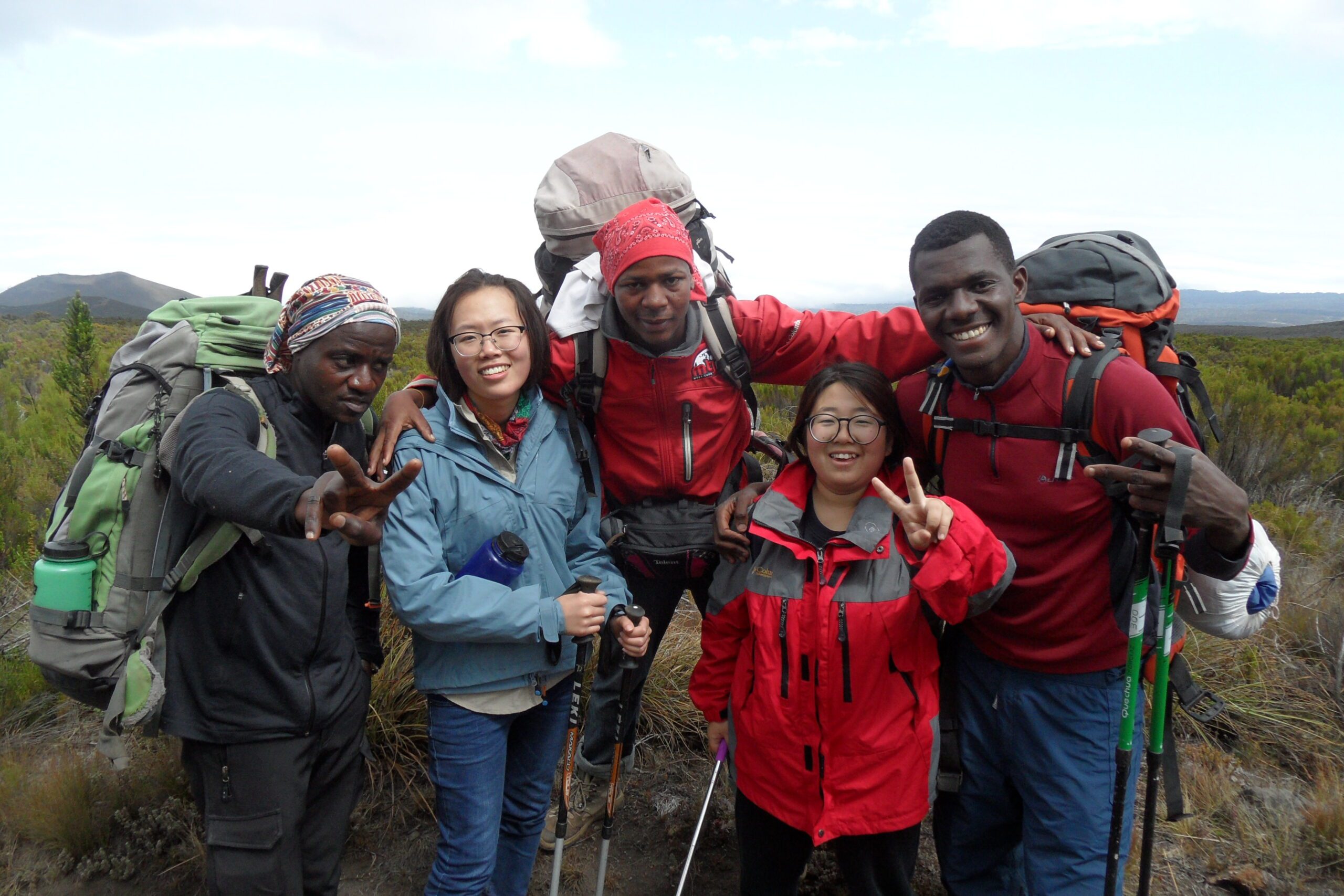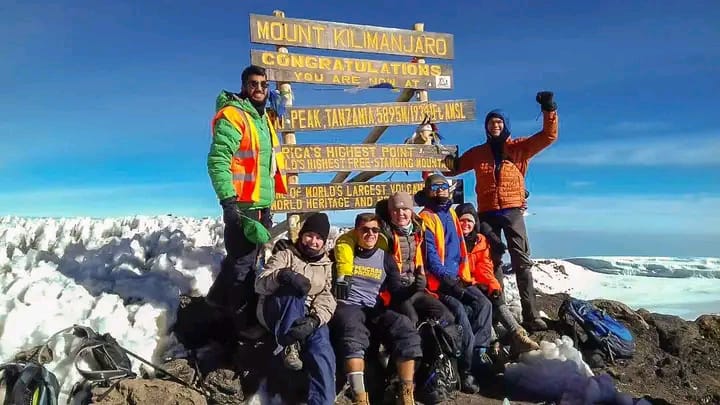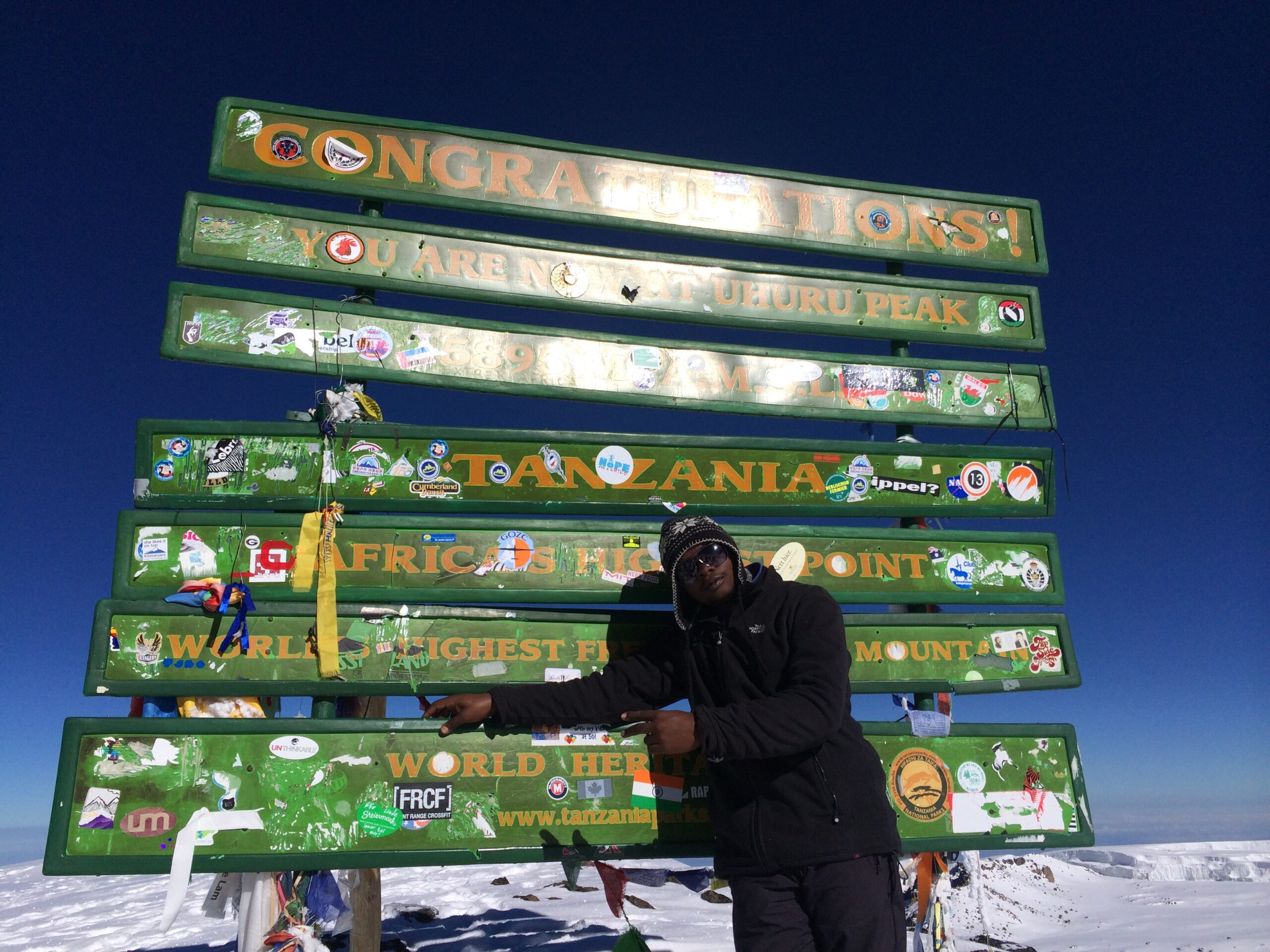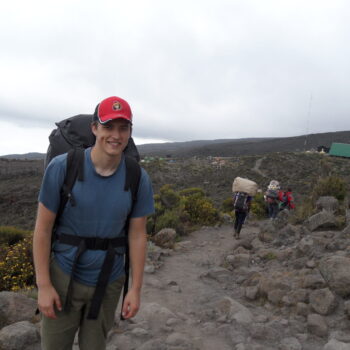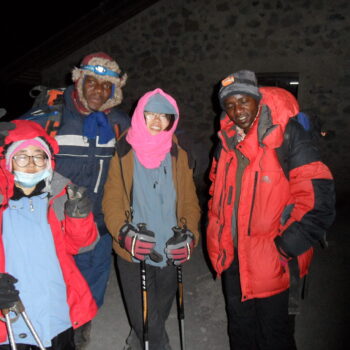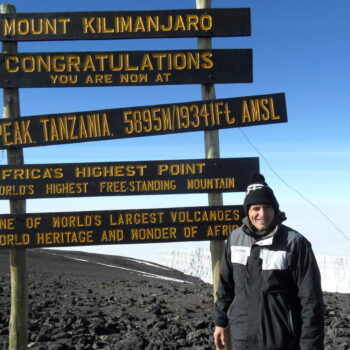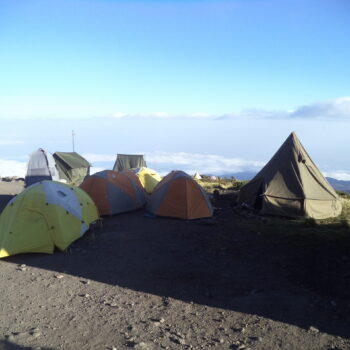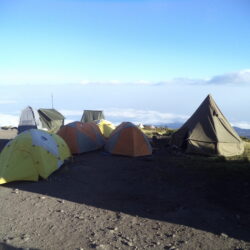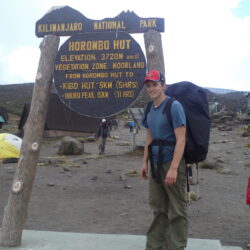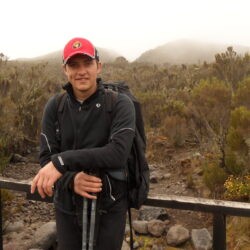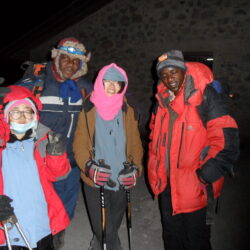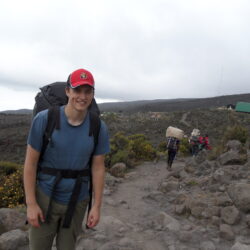ALL ABOUT CLIMB KILIMANJARO.
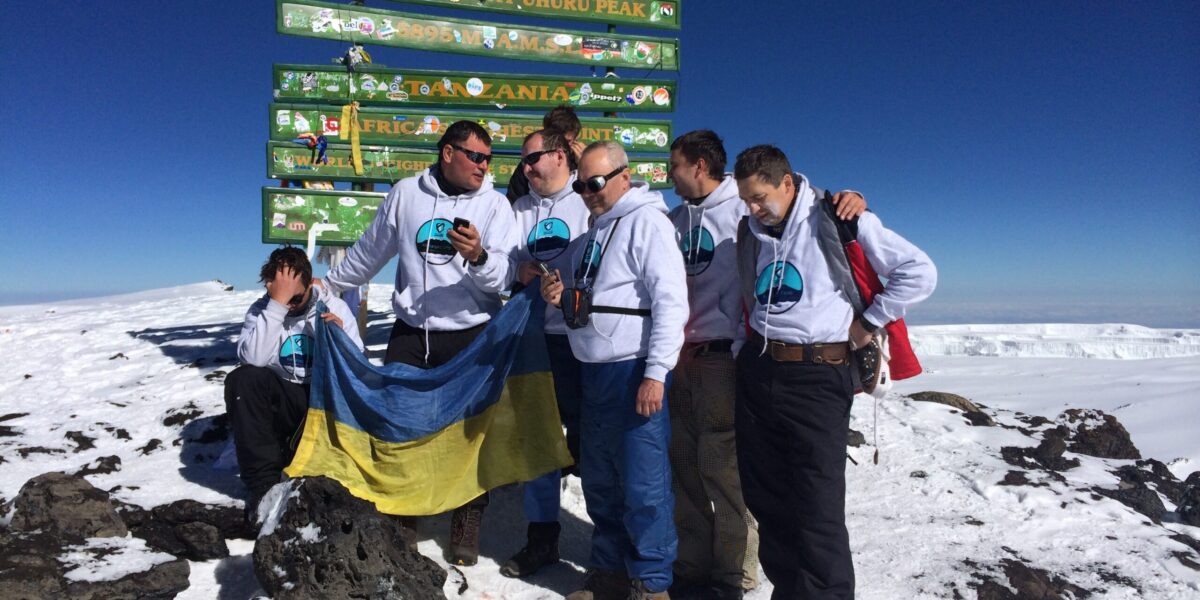
Although it is possible to climb Kilimanjaro all year round, generally months with good weather are recommended as adverse weather conditions such as excessive rain, winds, snow/ice and extreme cold can be draining on the body and significantly lower your chances of summiting and also increase safety risks.
Typically, the months of January & February and also September & October are considered to be the best months in terms of dry weather and moderate temperatures. June to August are also good months in terms of dry weather but temperatures will be much cooler. Some rain can be expected in November, December and March. April and May are the rainiest months and climbing conditions are usually considered poor. If you are considering climbing in the wetter months, the Rongai route is recommended since the northern side of the mountain receives less precipitation.
As you can expect, the months with favorable climbing conditions are also the busiest months in terms of the number of people on the trails.
How cold is it on Kilimanjaro?
Climbing Kilimanjaro will take you through four ecological zones in only a matter of days depending on your route from the rainforest, to moorland, to the alpine desert, to finally the arctic zone.
At the base of the mountain, the average temperature will range from 20 to 27 Celsius depending on the month of the year. The temperature will quickly decrease as you gain elevation and pass through the different ecological zones. At Uhuru Peak, the nighttime temperatures can drop down to – 25 Celsius or even lower depending on wind chill. The weather on Kilimanjaro can be extremely variable and change very quickly. It is advisable to be prepared for extreme weather including rain, gusty winds and cold nights.
The shortest route to the summit taken by most trekkers is the Marangu route which can be done in four nights, five days. Having said this, the Marangu route also has the highest failure rate when it comes to summiting. Why? Because reaching the summit isn’t just about a climber’s physical fitness level, but also whether the climber’s body has had enough time on the mountain to acclimatize to the high altitude.
There is a definite correlation between the number of days spent on the mountain and reaching the top – the longer the climb, the better the chances of summiting.
Our advice is whatever routes you select add an acclimatization day and have a safe and enjoyable climb. Opting on a short route and climbing based on the minimum number of days may seem like a good idea to save costs but in reality, you significantly reduce your chances of summiting and if you are traveling all the way to Tanzania for the purpose of climbing Kilimanjaro, the additional cost of an acclimatization day is well worth it and overall will make for a safer and more
Each route has its own beauty. This quick summary may help you decide which route to select!
The Marangu Route.
The Marangu route is commonly known as the coca cola route as it was the most popular route for several years. It has now been relegated to number two by the Machame route. Its popularity stems from the fact that it is the least expensive option, but more so, perhaps because accommodation is in huts.
Advantages
Low cost, accommodation is in huts, no camping equipment needed, often considered the easiest route (we beg to differ!)
Disadvantages
Lowest success rate (only about 65% of climbers on this route reach the top), more crowded, camping is not allowed and a very high increase in elevation on each day – increasing risk of succumbing to altitude sickness. It’s the only route that uses the same way up and down.
The Machame Route.
The Machame route is one of the most scenic routes on Kilimanjaro. Machame is now the most popular Kilimanjaro route. This is a popular route up steep paths through magnificent forests up to a ridge which leads through the moorland zones to the Shira Plateau. It then traverses beneath the glaciated precipices of the southern ice fields to join the Barafu route to the summit.
Advantages
Relatively low cost, a very scenic path and a higher success rate than Marangu
Disadvantages
Higher level of difficulty and quite busy in peak season.
The Rongai Route.
The Rongai route is a relatively easy route up Kilimanjaro. It has a reputation as a remote wilderness trail. Rongai is the only route to approach Kilimanjaro from the north. The Rongai Route is one of the least frequented routes and is the second easiest route up Kilimanjaro. The approach to the mountain is from the less-forested north side and the descent is by the Marangu Route. There are several variations; we take a longer route taking in Mawenzi Tarn.
Advantages
A relatively easy Kilimanjaro route and one of the quieter routes on Kilimanjaro. You approach the mountain from the driest side giving you the best chances of good weather. The ascent and descent are on opposite sides so you experience both sides of Kilimanjaro.
Disadvantages
Higher cost due to additional travel to reach other side,considered less scenic than Machame.
The Shira Route.
The Shira route approaches Kilimanjaro from the west and crosses the caldera of Shira Volcano before heading beneath the southern ice fields of Kibo. The route is seldom used by other trekkers and so your initial two days on the mountain are less crowded than on most other routes.
Advantages
Less crowded and very scenic
Disadvantages
Higher cost, higher difficulty level and when it meets the Machame trail it can get busy during the high season
The Lemosho Route.
Remote and beautiful, but long and expensive, this route also approaches Kilimanjaro across the Shira plateau. After beautiful forests and moorlands it crosses the Shira Plateau to meet up with the Machame Route. Groups may be accompanied on the first day by an armed ranger as the forests around the Lemosho Glades are rich in buffalo, elephant and other game.
Advantages
Extremely scenic route with very few other climbers during the first few days. There is plenty of time for acclimatization and consequently a high likelihood of reaching the summit.
Disadvantages
High cost and a slightly higher difficulty level than than the Machame route.When the the route meets the Machame and Shira trails, it may become crowded on the last few days during peak season.
The Umbwe Route.
The steepest Kilimanjaro route with scenic views, the Umbwe route is one of the shortest routes to the Southern Glaciers and the Western Breach. It is probably the most scenic, non-technical route on Kilimanjaro. It is quite taxing, primarily due to the relatively fast ascent to higher altitude, but the rewards are plentiful. This route is rarely used. The Umbwe route is only suitable for people with mountain climbing experience.
First, before you start any training, get a medical checkup and ensure that you are in good physical health and also inquire whether high altitude trekking is acceptable for your age, fitness level and health condition. Determine if any pre-existing medical conditions or any medications you are taking can cause problems on the climb.
We ask that you inform us of any current or prior medical conditions that we should be aware of at the time of booking.
As for training, although Kilimanjaro can be climbed by most people with an average fitness level, the climb is a much more enjoyable experience if you have properly trained and are physically fit.
The best and only exercise that you really need to do to prepare for climbing Kilimanjaro is hiking. It’s best to start training three or four months prior to your climb. If you have never hiked before, start gradually hiking a short distance at a slow pace and gradually increase the distance, elevation gain and start carrying a day pack. Be sure to wear the hiking boots you will use for your climb. Try to get to a point where you are able to comfortably hike four to six hours with an elevation gain of 500 – 600 metres while carrying an 8 kilogram day pack on two consecutive days (over a weekend) and you will be ready.
At an elevation of 3,600 metres the barometric pressure is about 630 mb (480 mmHg) while the barometric pressure at sea level is approximately 1000mb (760 mmHg) resulting in roughly 40% fewer oxygen molecules per breath.
Lower air pressure at high altitude can also cause fluid to leak from the capillaries in the lungs and the brain which can lead to fluid buildup and result in a life-threatening condition known High Altitude Pulmonary Edema (HAPE) and High Altitude Cerebral Edema (HACE).
There are four factors related to AMS: (1) high altitude; (2) fast rate of ascent; (3) exertion of the body; and (4) dehydration. The main cause of AMS is climbing too high too quickly. Your body has the ability to adapt to decreased oxygen at higher elevations if given enough time.
At over 3,000 meters 75% of climbers will experience at least some symptoms of mild AMS which include:
- Shortness of breath
- Increased heart rate
- Headache
- Nausea & Dizziness
- Loss of appetite
- Fatigue
- Restless sleep
Climbers suffering mild AMS may keep ascending at a moderate rate and symptoms will generally subside as the climber acclimatizes.
If you start suffering mild AMS while hiking, please communicate this to your mountain guide so that he is aware and can keep an eye on your symptoms.
Symptoms of moderate AMS include:
- Severe headache not relieved by regular headache medication
- Nausea and vomiting
- Weakness and fatigue
- Shortness of breath
- Ataxia or decreased coordination
Normal activity becomes difficult for a person suffering moderate AMS and the person must turn around and descend to a lower elevation. Descending even only a few hundred meters will result in improvement of symptoms. Continuing to a higher altitude while suffering moderate AMS can lead to severe AMS and death.
Symptoms of severe AMS include:
- Shortness of breath at rest
- Inability to walk
- Loss of mental acuity (HACE)
- Fluid build-up in the lungs (HAPE)
Severe AMS requires emergency descent of 600 meters and anyone suffering from HACE or HAPE requires evacuation to a hospital for Treatment
Is Tanzania a safe country to visit?
Since its independence in 1961, Tanzania has been a politically stable country and one of the safest countries to travel to in Africa.
We do however recommend that you use common sense and take safety precautions as you would when traveling in any foreign country:
- Leave jeweler and expensive watches at home
- Keep all your important documents and cash in a money belt hidden under your clothes or in your day pack in your possession at all times (do not leave cash in your duffel bag to be carried by the porters)
- Keep a copy of all important documentation (passport, itinerary, insurance policy, credit cards, etc.) locked in your duffel bag
- When shopping, carry a few dollars for spending money in an easily accessible zippered pocket or shoulder bag rather than displaying your money belt
Do not walk around town after dark in Arusha, Dar Es Salaam, or Zanzibar – always take a taxi even if you are only going a block or two.
What is the best way to get to Tanzania?
If you are coming from North America or Europe, we recommend flying KLM to Kilimanjaro International Airport (JRO). If you are coming from China, we recommend flying Ethiopian Air to Kilimanjaro International Airport (JRO).
If you are planning a visit to Zanzibar after your climb, we recommend that you either (i) arrange your flight so that you arrive at JRO and depart through Dar Es Salaam International Airport (DAR) or consider arriving into Tanzania through DAR and then take a connecting flight to JRO to start your climb.
The flight between JRO and DAR is approximately about one hour.
Please confirm all international flights and seating prior to departure.
Do you need a Tanzanian tourist visa?
Tourist visas can be obtained upon arrival at Kilimanjaro International Airport or Dar Es Salaam International Airport by simply filling out an entry form (provided during your flight) and payment of the visa fee. Please ensure you have two blank pages in your passport and your passport does not expire within six months of your arrival date.
The tourist visa fee is US$50-$100usd with the exception of the following citizens: Pakistan (US $ 200), USA (US$100), and Ireland (US$100).
Do I need Travel Insurance?
Kilimanjaro climbs are a considerable investment and it involves risks and carrying comprehensive travel insurance is a condition of booking. Coverage should include trip cancellation, delay or interruption, lost or delayed baggage, emergency accident, illness and evacuation, 24-hour medical assistance, and traveler’s assistance. We suggest that you contact your insurance company to ensure that a Mount Kilimanjaro climb is covered under the policy. ANAPA Safaris does not include travel insurance or any protection plan in its climb price.
How do I pay for my Kilimanjaro climb?
We request that your advance deposit be needed to secure a climb and the balance of Kilimanjaro climb payment be made in US dollars by wire transfer into Global Safaris Tanzanian U.S. dollar bank account. Unfortunately, we do not accept credit card payments at this time.
All deposits and payments received into the company’s bank account will be held on your behalf and we only disburse funds to the appropriate suppliers as necessary until such time we have completed delivering our services to you.
Do I need to go safari after climbing Kilimanjaro?
Within easy reach of Meru, there are five fabulous safari parks that makeup what is called the Northern Circuit. Each is distinctly different but all are wonderful. Take your pick or why not try to visit them all while you are in Tanzania.

- Climb pole pole (slowly, slowly in Swahili), follow your mountain guide’s lead, stop often drink and to enjoy the views. Don’t be in a hurry to get to the next camp. Include an acclimatization day into your itinerary.
- Take deep breaths and do not overexert yourself.
- Climb high, sleep low. Climb to a higher altitude during the day, and then sleep at a lower altitude at night. By adding an acclimatization day, additional hikes can be incorporated into your itinerary to help your body adjust.
- Stay well hydrated. You should be sipping water continuously while you are climbing at least 3 litres while on the trail. Camelbacks or Platypus encourage drinking and is highly recommended. Make sure you eat enough food to keep up your strength even if your appetite starts to diminish.
If you begin to show symptoms of AMS, let your mountain guide know so he can monitor your symptoms. If you do not feel well, do not say you feel fine. You may be risking your life.
If your mountain guide determines that you are unwell and it is in your best interest to abandon the climb and he tells you to descend, it is an order. Respect the decision of your mountain guide and follow his instructions.
What is altitude sickness and will it affect me?
Kilimanjaro is a serious mountain and the dangers associated with climbing Kilimanjaro should not be taken lightly. Although not widely discussed, it is estimated that every year nearly 1,000 climbers are evacuated from the mountain and approximately 10 deaths are reported and in the vast majority of the cases, it is due to altitude sickness.
For anyone climbing Kilimanjaro, it is essential for you to know the symptoms of altitude sickness or Acute Mountain Sickness (AMS) to avoid an emergency or life-threatening situation.
Acute Mountain Sickness is caused by the failure of the body to adapt quickly enough to the reduced oxygen as the climber reaches higher altitudes. Although the percentage of oxygen (about 21%) remains the same from sea level to the top of Uhuru Peak, the barometric pressure decreases with altitude and accordingly, the amount of oxygen taken in by your lungs and absorbed by your body with every breath also decreases.
Mount Kilimanjaro climbing is one of the ultimate challenges for both first-time and regular climbers. Kilimanjaro has a range of different climates and you need to be equipped so that you are comfortable at the different altitudes. In the lowland of Moshi and around Marangu and other entrance gates the weather is tropical (the temperature ranges from 20o c – 30o c) and sunny.
As you climb the altitude changes and here is when the drama starts (at the summit 5o c and below). As you ascend, Kilimanjaro weather gradually changes and gets colder and the increasingly thinner air can bring about altitude sickness. Altitude sickness is caused by the failure of the body to adapt quickly enough to the reduced level of oxygen in the air as one gains altitude. It is likely that you will experience some form of mild altitude sickness during your climb.
While attempting to climb Kilimanjaro climbing you may experience different symptoms but the most common are headaches, light-headedness, nausea, sleeplessness and a loss of appetite, loss of balance, and dizziness.
In most cases, these sicknesses are controlled by taking a painkiller such as panadol or similar. All climbers have been advised to countercheck their body conditions and should make our professional Mount Kilimanjaro guide(s) aware of any abnormalities.
Our guides are experienced and trained to spot acute mountain sickness. We do carry oxygen on all climbs and we provide free pulse oximeter checks at altitude which measure both your heart rate and the percentage of oxygen in your blood. This is to help us to ensure your health and safety at altitude.
You must take out travel insurance for your trip and ensure that the policy covers you for climbing Mt Kilimanjaro. This is important. If you need to be taken down to a lower altitude as a matter of urgency, there are two options.
Steel-framed, mobile stretchers can be pushed by porters and can be used to take you down quickly. Furthermore, there are emergency helicopters based in Moshi. As there is full mobile phone coverage on the mountain, the guides are able to call the emergency base at any time to arrange for an emergency medical evacuation.
The helicopters are available and are always on standby. And can reach evacuation points in less than 10 minutes once that has been called the guide. With a helicopter evacuation, the aircraft will fly you directly to an emergency hospital in Nairobi / Kenya (just across the border).
If in doubt, seek a doctor’s advice before you travel, and on your arrival listen to what your chief guide advises you. Some clients usually take Diamox before attempting Kilimanjaro and others take it when they are on the mountain. We recommend that you allow your body to acclimatize itself and only if there is a need, should you then take medication.
What to do while on Kilimanjaro
Drink plenty of water and eat good-sized meals. You should drink as much water as you can – a minimum of 3 liters per day. Also, reduce or eliminate caffeine intake – as it has a diarrheic effect which can increase your dehydration. Minor altitude sickness on Kilimanjaro also causes most climbers to lose their appetite. It is important to try and eat as well as you can in order to generate more energy. Our mountain cooks are well-trained and prepare tasty food for all diets.
Accommodation:
With exception of the Marangu route where accommodation is in huts, you will be staying in tents every night. It is important you wrap well up and stay warm. Wear a beanie on your head at night.
The walking pace should be slow and steady. We recommend you take your time and walk slowly from one camp/hut to give yourself the best chance of full acclimatization as well as reducing tiredness for the next day. Trekking high and then descending to a slightly lower altitude to sleep is the best technique to help your body acclimatize. We have been prepared to follow this to give you every possible chance of success to reach the summit. Finally, don’t smoke or drink alcohol when attempting to climb this mountain as it might bring about a loss of energy and prevent you from accomplishing this adventure of a lifetime.
Rescuing procedures
It sometimes happens that customers can’t continue. In such instances, you will be assisted by an assistant guide to return back to the gate, or else the chief guide will take care of the matter and leave the group with his assistant to continue. On the arrival at the gate, you will find our vehicle that will transfer you to Moshi town for rest and medication if necessary. While waiting for your colleagues in a hotel we will be monitoring your health as well as keeping you busy with other popular activities around the Kilimanjaro region and the nearby town of Arusha.
It all depends upon the itinerary and time available. If a customer is experiencing acute sickness, they will be assisted down by a chief guide to the gate by wheeled stretcher. At the gate, we will be there to transfer you to a hospital in Moshi or Arusha depending on the situation. The other option is by using an emergency helicopter – which is always on call.
Acute Mountain Sickness (AMS)
Altitude Sickness normally occurs at high altitudes around Gilman’s Point, Stella Point or on the Summit of Kilimanjaro. The record shows that more than 80% of climbers suffer from this illness but they recover and still make it to the top.
For those who get seriously ill, the only proper cure is to descend by at least 600 m. The symptoms of the illness include reduced urine output, nausea, anorexia, headaches, rapid pulse, insomnia and swelling of the hands and feet.
To help prevent the onset of acute mountain sickness, reduce the pace of your trekking. Eat as much as you can since altitude will reduce your appetite. Drink as much water as you can. Three to four litres per day including hot drinks such as chocolate decaffeinated coffee or herbal tea. While trekking with us we’ll feed you as much as we can to make sure that you keep your energy levels up.
Along with all the natural precautions, there are also preventative medicines such as Diamox. This is available and you should consult your physician for specialist advice. Fluid build-up may cause a situation known as edema, which can affect the lungs, preventing effective oxygen exchange, or affect the brain (cerebral) which will result in the swelling of the brain tissue. When this situation occurs you will need immediate assistance. Our guides always trek with an oxygen kit to deal with such circumstances.
Hypothermia.
Hypothermia occurs when your body fails to generate enough heat to keep your body at the right, warm temperature. Since the weather on Mount Kilimanjaro can change quickly and a covering of mist and rain is commonplace – your clothes can get wet and this will leave you feeling cold. Check your climbing gear to avoid this common problem and make sure you carry a raincoat or poncho even in the dry season. On Kilimanjaro, it can rain at any time.
Treatment of this illness is simple but should not be underestimated. Remove all the wet clothes and wear dry warm clothes. Stay by the cooking fire for a while then rest and wrap up as warmly as you can. Sleeping in a sleeping bag with your colleague can also be an effective treatment to warm up quickly.
Sun-related injuries.
about 55% of the earth’s protective atmosphere is below an altitude of 5000m. Above that height, far less ultraviolet light is being filtered out, making the suns’ rays much more powerful. It is strongly recommended to use a 20+ sun protection cream at lower altitudes, and a total block cream above an altitude of 3000m. Wearing sunglasses when on Kilimanjaro is necessary. The sunshine at the top of Kilimanjaro in the morning makes the Kili ice shine and can lead to snow blindness. Snow blindness is a painful injury and might require your eyes to be bandaged for some time.
Is it worth the while to take Diamox on a climb as a measure against altitude sickness? What is the optimal dose, are there any contraindications and how severe the side effects are: to find it out, read this feature on Diamox. It was written based on the results of clinical research and years-long experience of our company’s Kilimanjaro climbing.
Altitude Sickness.
When rapidly gaining a considerable altitude, an unprepared person begins to experience discomfort associated with a lack of inhaled oxygen. This condition depends on many external factors and individual body reactions. Unless you have climbing experience and vast knowledge of your body’s condition, no one can predict how you are going to feel on a Kilimanjaro trek.
Altitude sickness is a completely normal phenomenon indicating that your body adapts to the changing conditions. It can range in severity from a slight discomfort such as dizziness, slight shortness of breath or palpitations to serious ailments requiring immediate evacuation and medical attention. The most severe form is known as acute altitude sickness combined with both pulmonary and cerebral edema.
The traits of oxygen deficiency in some individuals may appear already at an altitude of 6,561 ft (2,000 meters), although most often the first sensations are recorded at an altitude of 9842 ft (3,000 meters) and higher. For example, one of the most popular routes on Kilimanjaro called Lemosho, actually starts at an altitude of 11,482 ft (3,500 meters) following an altitude drop–off by transport closer to the first camp. So you can feel the first impact during the next few hours after the start.
In most cases, up to ca. 13,123 ft (4,000 meters), a body is able to adapt on its own and rearrange the respiratory system to compensate for the lack of oxygen in the air. Another thing is that there is not always enough time for this during the climb because the number of days is limited. Above 13,123 ft (4,000m), the organism most often needs assistance expressed as deliberate actions: regulating the rate of movement, frequent rest, drinking more water and careful monitoring of the state of health. You can also take prophylactic drugs, such as Diamox
Helping Your Body to Acclimate.
The most effective way to fight altitude sickness during climbing is smooth step-by-step acclimatization, which can be ensured through a long trek to the Kilimanjaro top – seven days is the recommended duration. The ideal route is to make a short ascent of a few hundred meters Studies have shown that the optimal altitude gain in one day is in the range of 980-1,968 ft (300-600 meters).during the day and spend the night at the lowest ascent point. Treks in the afternoon are good for smooth acclimatization: the climbers, having already overcome the day part of the route, walk a short distance at the same altitude or climb somewhat higher, and then descend to the camp before the night rest.
At night, during sleep, the body adapts to the new conditions. Breathing may be interrupted for a short time. This is an unpleasant but common phenomenon. It is caused by a decrease in the carbon dioxide level in the body which the brain perceives as a signal to decrease the rate of breathing in order to accumulate the usual amount of CO₂. After holding a breath for a few seconds, a person wakes up feeling as if suffocating. This is one of the signs of the body’s readjustment to altitude conditions.
It is also important to pay close attention to how you feel during daytime climbing, to find the best pace for you and immediately react to the body’s signals: labored breathing, a slight tingling in the chest, dizziness, deterioration of vision. The appropriate reaction is to stop or even to sit down, normalize your breathing, have a rest, and continue moving, slowing down to a comfortable speed. Moderate pace during day ascents and gradual acclimatization with enough nights on the hike guarantee your successful summit of Kilimanjaro. For this reason, we recommend long climbing programs of 7 days and more. Those climbing programs have the highest success rate
The condition of your body before and during the climb contributes greatly to your success. Here is what defines your successful ascent: you should sleep well and sufficiently; you should not be under stress, and you should avoid alcohol. During the ascent, you need to drink more water than usual, eat on schedule and according to the high-carbohydrate mountain diet, have the necessary clothes and shoes not to get too cold or wet, and protect yourself from the increased sun in the mountains.
Finally, pharmacological support for the body is a way to go: you can take Diamox tablets as preventive medicine. Based on many years of experience and supporting conclusions of actual studies, See the following entries for reference:
1) peer-reviewed journal of Wilderness Medical Society
2) CDC web site
3) Great Britains’s National Health Service site
4) Research Gate
we recommend climbers to take Diamox during their trek to the Kilimanjaro summit.
What Is Diamox
Acetazolamide is distributed under the trade name of Diamox. The drug is a carbonic anhydrase inhibitor, or in other words, an agent preventing the operation of ferments binding carbon dioxide with water during breathing. Thus Diamox reduces the level of carbonic acid and slows down the CO₂ consumption to level out the acid-base balance.
Acetazolamide, the active substance of the drug, is by default a diuretic. The more frequent urge to visit toilet during the ascent to Kilimanjaro is absolutely normal. This may be caused not only by the intake of Diamox but also by increased consumption of water. We remind you that increased consumption of water during mountain trekking is recommended: you should drink not less than 4 liters of water per day.
Diamox is prescribed for the treatment of cerebral edema and glaucoma, as well as other diseases and conditions, including the treatment of altitude sickness. Among the manufacturers’ recommendations, there is also a prophylactic use against the development of altitude sickness.
When and How Much to Take.
Diamox may be used for prophylaxis according to two schemes: when symptoms of altitude sickness appear and until they subside, or before the beginning of ascent and until its completion. The decision about prophylactic use should be made by each climber independently. Most often it depends on the general attitude to drugs dividing people into two types: “Better safe than sorry: a couple of pills will not make you worse” and “Let my body cope by itself, I will take pills as a last resort”.
Let’s refer to the recommendations of the U.S. Centers for Disease Control and Prevention (CDC). The Centers for Disease Control and Prevention, or CDCs, are the U.S. national public health institutions that participate in health programs around the world. We refer to the CDC because it has the most open and comprehensive data on infectious and chronic diseases in various countries, as well as evidence-based recommendations.Diamox prophylaxis Detailed recommendations for prophylactic Diamox intake from the CDC are as follows.
Prophylactic use of Diamox is beneficial for all people climbing 9,186 ft (2,800 meters) or more in one day and also when climbing more than 1,640 ft (500 meters) per day above 9,842 ft (3,000 meters) with an additional acclimatization day for every 3,280 (1,000 meters).
It is highly recommended to use Diampx for prophylaxis to all those ascending in one day to an altitude of 11,482 ft (3,500 meters) or more, as well as when climbing 1,640 ft (500 meters) or more in one day at an altitude above 9,842 ft (3,000 meters), in the absence of additional days for acclimatization.for altitude sickness is indicated for anyone who climbs more than 1,640 ft (500 meters) in one day. Separately, in the case of climbing Mount Kilimanjaro in less than 7 days, The majority of popular routes for climbing Kilimanjaro ensure an ascent to the peak in about 8 days.taking Diamox for prophylaxis is strongly recommended.
If you are not allergic to Diamox, we recommend taking 125 mg of Diamox in the morning before your ascent to Kilimanjaro and then 125 mg twice a day, every afternoon and morning, during the entire ascent. All Altezza Travel guides have a stock of the drug for all climbers in their first-aid kits, and daily, during the mandatory morning and evening medical check-ups, offer it to climbers. The drug is included in the price of expeditions and does not incur additional expenses.
There is a low percentage of allergic reactions to the sulfonamide components of the drug. To find out if you are allergic to them, please consult your physician.
There is some debate about the dosage among high-altitude medicine practitioners. Still, the optimal recommendation is 125 mg of Diamox twice a day, in the morning and in the afternoon. Clinical studies have shown that an increased dosage to 500 mg per day, 250 mg per dose, is also effective for the prevention of acute altitude sickness. This increased dose is recommended for people whose body weight exceeds 80 kg. Doses above 500 mg per day are used for treatment.
Does Diamox Have Side Effects?
As with any drug, Diamox has several side effects of varying severity and varying degrees of investigation.
First of all, it should be noted that Diamox acts as a diuretic. It is perfectly normal if you go to the restroom more often during the days of taking the pills, although it does not always manifest itself and not with everyone. Also, the registered side effects include a slight tingling sensation on the skin.
All other side effects indicated for the drug are either rare or unconfirmed. Drug manufacturers have to list them as a safety precaution.
The most common fear related to the use of Diamox is the fear of digestive system disorders. Side effects such as nausea, vomiting, diarrhea and melena are clinically described as “infrequent”. In practice, we do not observe their prevalence among climbers. Let us remind you that more than 3,000 people climb Kilimanjaro every year with Amani Hostel.
The connection between many side effects of the drug and its use is poorly proven. It should be remembered that at high and extreme altitudes, these range from 4,921 ft (1,500 m) and 18,044 ft (5,500 m) above sea level. Altitudes above 5,500 meters are considered extreme. The height of the main peak of Kilimanjaro is 19,340 ft (5895 meters).the effects of altitude sickness develop. The body experiences stress, and while it adapts it changes its reactions, including digestive effects, such as loss of appetite and indigestion. Unfortunately, this cannot be regulated with regular medications. So the connection of these and other effects directly with the use of Diamox is not obvious. In any case, the use of the drug is to help the body in its adaptation to the altitude and overcome the altitude stress.
Who Should Not Take Diamox
In addition to an allergic reaction to the sulfonamide components, there are several direct contraindications to the use of Diamox. First of all, this applies to people with kidney disease, liver disease, and chronic or severe lung disease. Taking Diamox is contraindicated in cases of sodium and potassium metabolism disorders, as well as metabolic acidosis, diabetes, and some other deviations from the norm.
If you have the opportunity to consult your physician about the use of Diamox in advance, it is highly recommended to do so.It is also not recommended to take Diamox together with aspirin. This drug is also not recommended for pregnant women.
Best Kilimanjaro Routes.
There are more or less six established ascent routes – Marangu, Machame, Lemosho, Shira, Rongai, and Umbwe.
The Lemosho and Shira routes start from the west side of the mountain, while Machame and Umbwe routes approach the mountain from the south.
The Marangu route starts from the southeast and lastly, the remote Rongai route commences from the north close to the Kenyan border.
